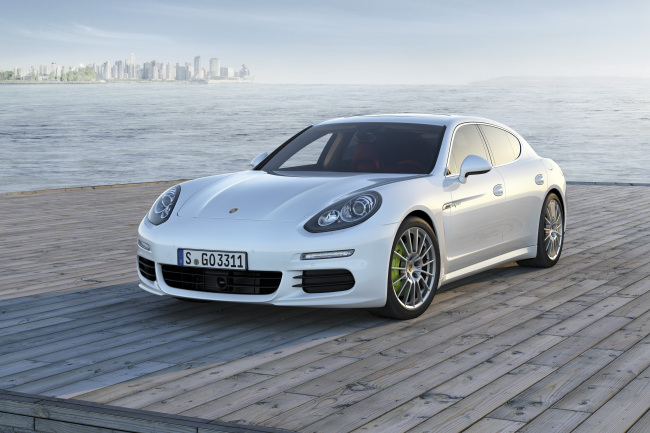SHANGHAI, China ― About 10,000 journalists and visitors packed the exhibition halls of the Shanghai motor show during the media preview on Saturday. And their final destination seemed to be the same building, the N1, which housed the world’s most prestigious car brands such as Porsche, Ferrari, Lamborghini and Rolls-Royce.
China’s market for “premium” cars costing up to $190,000 was 1.25 million vehicles last year, second only to the United States, according to consultancy McKinsey. Even though the U.S. luxury car market still shows little sign of abating, companies are turning their eyes to the all-important, lucrative Chinese market.
 |
The Panamera S E-Hybrid. (Porsche AG) |
The German sports carmaker Porsche has seen stellar growth in China in recent years. The luxury brand used to sell some 250 vehicles per year there in the early 2000s. But its sales soared to 31,025 units last year, with China emerging as the second-largest market for Porsche, behind the United States.
For the Panamera, whose international debut was made exactly four years ago in Shanghai, China is the No. 1 market.
“The Porsche Panamera and China ― that is a very special success story,” said Matthias Muller, CEO of Porsche AG. “In 2012, 1 out of 3 Panamera cars were delivered to China,” he said, considering that the four-door sports sedan sold some 100,000 units globally in the year.
This year here in Shanghai, China’s most sophisticated city, Porsche celebrated another world introductions of the new Panamera S E-Hybrid, the first plug-in hybrid in the luxury class, and the other two Executive versions for the Panamera S and Panamera 4S that feature an extended wheelbase and a three-liter V6 engine.
Porsche had two hybrid models already in production, versions of the Panamera and Cayenne SUV, but this will be the first that can be plugged in to charge its batteries from an external power source in addition to using energy generated by a gasoline engine.
The hybrid Panamera, with a 95-horsepower electric motor in addition to 3.0-liter V6 gasoline engine, will have a maximum output of 416 horsepower. It can hustle from 0 to 100 kilometers per hour in 5.5 seconds, with a top speed of 270 kilometers per hour.
The Executive models of the Panamera, which have a wheelbase that is 15 centimeters longer and as a result more legroom behind the front seats, have the innovative Panamera air suspension that combines excellent ride comfort with hypical Porsche handling properties.
The CEO said the 911, Boxster and Cayman model series have also enjoyed increasing customer interest in China, a positive trend that will be further reinforced by intensive motorsport involvement by Porsche in Asia.
Bernhard Maier, sales and marketing chief of Porsche, agreed that the competition in the sports car segment would get fiercer among luxury carmakers as companies are joining the race to build more strong brand values and seek more profits.
“This is motivating us a lot and really shows that confidence in the segment is stronger than ever before. But we wouldn’t give up our unrivaled position,” he said. “The seventh generation of the 911 is the best 911 we built and sold. And I believe the next, eighth generation would be the best.”
“Competition is always good in the auto industry,” he said showing no doubts about the brand’s exclusiveness in the global high-performance car market.
In Korea’s dynamic import car market, Porsche is also a big seller that has renewed record-high sales every year more recently. Stuttgart Sports Cars, the official Korean importer of Porsches, sold 1,516 vehicles last year, a 16.5 percent rise from 2011.
By Lee Ji-yoon, Korea Herald correspondent
(
jylee@heraldcorp.com)








![[Today’s K-pop] Blackpink’s Jennie, Lisa invited to Coachella as solo acts](http://res.heraldm.com/phpwas/restmb_idxmake.php?idx=644&simg=/content/image/2024/11/21/20241121050099_0.jpg)